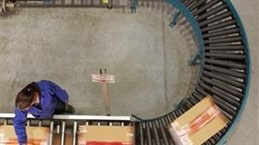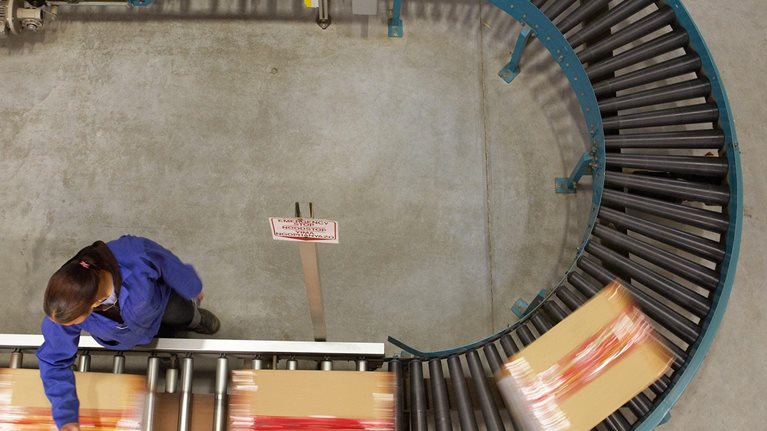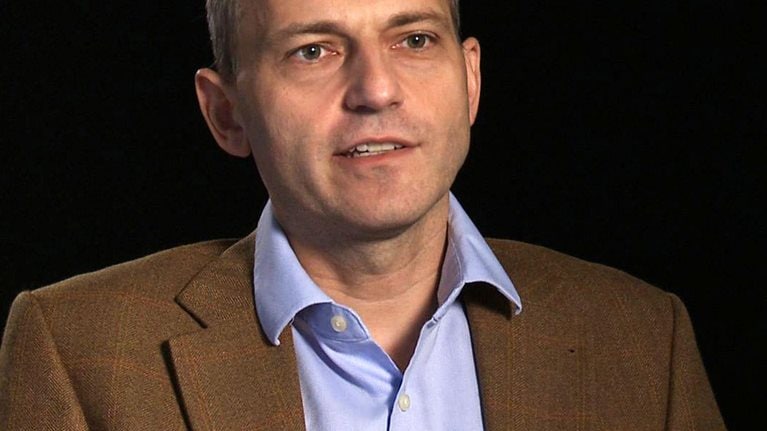Serving more than 4.6 million subscribers, Sky Deutschland—a unit of UK-based Sky—is the largest pay-TV operator in Austria and Germany, with revenue growth of more than 10 percent for the fiscal year ended June 30, 2016. Serving a geographically large, populous, and underpenetrated market with advanced technologies and services makes operational performance critical, especially in supply-chain management and logistics. Customers expect next-day delivery of essential technology such as set-top and smart-TV boxes, and it’s up to the company’s warehouse function to deliver two million parcels each year and handle one million returns as customers move to a new house or upgrade their services.
Meeting those customer-service expectations while also conserving resources has been the task of a team led by Sebastian Hauptmann, who until earlier this year headed Sky Deutschland’s supply chain and procurement and now serves as the company’s executive vice president of operations. Over the past three years, Sky Deutschland’s productivity increased by more than 20 percent, contributing to an almost 40 percent reduction in warehousing costs—and the company is still finding room to improve.
To describe the changes and what they mean for the company, Hauptmann spoke with McKinsey’s Knut Alicke and Christian Johnson from his office outside Munich.
McKinsey: How would you describe Sky’s previous approach to managing the warehouse—especially working with your logistics service provider (LSP)?
Sebastian Hauptmann: It was essentially a black box: we had little transparency in terms of the cost base or the potential for process improvement. Yet every time I visited the warehouse I kept thinking that we could be doing significantly more. But my evidence was anecdotal, so of course I had trouble convincing my team—which had already reduced costs significantly in the past. One of my colleagues estimated that we might be able to squeeze out another €100,000 or so, but no more.
McKinsey: Sky had already invested in improving the warehouse’s performance, correct?
Sebastian Hauptmann: Correct. Back in 2010 and 2011, our focus was on effectiveness in order to provide a better service to our customers, and we cut delivery times in half. Increasing efficiency had made progress as well, but way less than the radical improvements in effectiveness.
We started a couple of projects that called themselves “lean” or “Six Sigma,” but they didn’t achieve anything mind blowing. I think part of the reason was that the trainer I had chosen was extremely tools-and-theory oriented, with very little hands-on, “let’s go to the shop floor and get going” mentality. So, for example, the projects revealed a couple of issues with our internal forecasting quality—but nobody could quantify significant inefficiencies resulting on our side or the service provider’s side.
McKinsey: It wasn’t clear what actions you should take?
Sebastian Hauptmann: Indeed, or why we should take them. Ultimately, we realized that what we really needed was to understand our provider’s costs and see if we could find ways that each of us could work differently to make the end-to-end operations more cost efficient. Rather than just estimate the provider’s margin and negotiate how much each side would keep, the idea was to find improvement opportunities that would make a financially compelling argument for both sides and would get us into a partnership-based, continuous-improvement mode.
McKinsey: So how did you get this going?
Sebastian Hauptmann: The approach was twofold. One essential task was to analyze warehouse costs from a clean-sheet perspective to see what the operations “should” cost under ideal circumstances. This bottom-up cost calculation helped us both to understand the existing cost base and to get a sense of what the improvement opportunities were. The exercise revealed an opportunity of several million euros, so quite a lot more than €100,000 in savings.
In parallel, we worked jointly with the LSP to complete a two-day assessment directly on the warehouse shop floor. Together we found practical changes that helped to show us that the opportunity was real.
McKinsey: What was the response from the shop floor?
Sebastian Hauptmann: Anytime you set out to find inefficiencies there will naturally be resistance, which is why you need to get the facts right and communicate them well. Making it specific, concrete, and easy to grasp makes it difficult to argue against the findings.
McKinsey: What sort of investment did it take to make the changes real?
Sebastian Hauptmann: Luckily, I was able to rely on a highly motivated team. One important incremental investment was to hire a specialist with deep expertise in lean warehousing. Together with the rest of the team, he spent a lot of time on the warehouse shop floor, observing how people worked and working with them to find better alternatives.
Many of the other investments were surprisingly small. For example, the team redesigned the layout for labor-intensive returns, improving material flows so that conveyor belts no longer block the aisles. For carton handling alone, these types of changes reduced total workloads by the equivalent of two FTEs [full-time equivalents].
The introduction of a consistent performance-management approach was very powerful in helping stabilize productivity. Staffing levels can now be managed more appropriately: when we started, we didn’t even know how many workers had arrived in the morning. Today, we can predict very well how much work we can get done.
McKinsey: That’s a major difference.
Sebastian Hauptmann: In the end, there were two rounds of efficiency gains, starting with an improvement in average efficiency across the board. The more important gains, though, were a result of greater differentiation.
We discovered that we were leaving a lot of capacity unused in order to handle occasional spikes in volume. By classifying shipments according to urgency, we were able to make better use of our workers’ time: when a flood of orders came in, they knew which shipments needed to get out the door immediately and which ones they could set aside for fulfillment in a day or two once the flood receded. Changes such as that freed up almost 30 percent of the workforce, which could be reassigned elsewhere. It meant that we reduced costs while also preserving margin for the LSP—a classic example of the power of supply-chain differentiation.
McKinsey: What effect did those sorts of changes have on your organization?
Sebastian Hauptmann: It transformed our own capabilities. We realized that we wanted more than just the immediate cost reductions and efficiency gains—we wanted to understand the process so we could keep improving it.
It had a major effect on our priorities as well. When an organization is growing quickly, there are a zillion things you can do that will pay back quickly—the hard part is identifying the opportunities that will make the most difference and have the potential to keep paying back, year after year. That’s where you put your time, and the time of your best people.
McKinsey: Where are you putting that time and talent now?
Sebastian Hauptmann: We decided that with the end of our existing service contract coming up on the horizon, we would conduct an open tender.
McKinsey: That’s a major undertaking, no?
Sebastian Hauptmann: And a major risk. I once heard someone say, “I’m not going to get promoted for changing warehouse providers, but I could easily get fired.” But the whole process of examining clean-sheet warehouse costs and making practical improvements directly on the shop floor gave us the confidence that we had a deep understanding of how the target processes should look and what a realistic performance should be.
I sensed that the team was strong and hungry, and that we needed the challenge. It meant reexamining our existing relationship and opening ourselves to a new solution.
McKinsey: You mentioned capabilities. What were the most important ones you needed to make the tender effective?
Sebastian Hauptmann: To better evaluate the LSPs’ proposals, we needed to understand everything about managing a warehouse, right down to the time requirements for individual process steps. I did not want us to be tempted by supercheap offers that might be based on a miscommunication about our expectations. The team, including the lean expert we hired, helped us create a very detailed set of specifications describing the process we envisioned.
Of course, we also wanted to encourage the LSPs to come up with alternative ideas. But the baseline would be a level of detail showing all of the bidders that we were thinking through these issues very carefully. Our objective was to create the most thorough and transparent request for proposal possible.
Some LSPs actually dropped out early on, saying that what we were looking for was not a fit for them; that was a useful result. But some of the bids were quite creative and demonstrated a deep understanding of our requirements. The tender process was intense, but what better way to learn how potential partners would act than by getting concrete with them up front?
McKinsey: How has this experience changed the way you think about working with an LSP in the future?
Sebastian Hauptmann: The most important change is that we want to work with an LSP at eye level, cooperatively, with each of us understanding the issues and able to trust one another’s views. We don’t want the usual tension where each side hears what the other says but wonders whether it’s all just a cover for trying to extract a cost advantage.
At the same time, the fact that we now understand the LSPs’ costs and margins—this increases our responsibility to jointly address future changes in our requirements. That is why we have specified a process for costing and pricing new or changed activities. When we ask more, we may well have to pay more. But we will do so from a position of knowledge and mutual respect.
McKinsey: That’s quite different from the typical price negotiation.
Sebastian Hauptmann: It is. You create more of a common interest—each side wants to drive profitability, of course, but the transparency that both sides build into the relationship lets you manage more effectively whenever the interests start to diverge. That’s a totally different level of engagement.
Should our requirements stay largely stable for key parts of our business, this style of working side by side could lead us to say, “We just want X percent improvement every year,” and know that it will happen. This would allow us to redeploy our most advanced lean-transformation expertise to other processes or parts of our organization.

How agile is your supply chain?
McKinsey: With respect to the day-to-day management of the warehouse, what can the organization do now that it couldn’t do before?
Sebastian Hauptmann: That’s the most rewarding part of this transformation: seeing what we can do. Our greater efficiency means that our outbound logistics-handling costs have stayed flat since 2010, even though we ship more than 60 percent more in volume. But the expertise we can offer today is not only about driving our costs down but also about driving our competitive position using service as a commercial weapon—such as in making a highly aggressive Christmas delivery guarantee. That sort of capability will continue to unlock real value over the long term.
And the transparency we now have means that we can make changes much more quickly. If new requirements emerge or priorities change, we know where to look. This has come with experience; you can’t just send someone with a PowerPoint document.
McKinsey: What lessons would you offer to others starting on this journey?
Sebastian Hauptmann: Finding the right people to drive improvement is equally crucial and difficult. Ideally, you want a team that is eager enough to push hard and close enough to the shop floor to know the operation well and be respected by the front line. At the same time, they need to understand all of the end-to-end processes and priorities. That combination is rare but worth looking for.
Maintaining that combination takes work as well. It doesn’t stop with the hiring process—it continues in the subsequent development of the team.
McKinsey: What are the team’s next challenges?
Sebastian Hauptmann: To begin, the new warehouse is experiencing its first activity peaks, with the new Bundesliga [German football league] season under way and then Christmas to prepare for. I have to say, though, that so far this project has been the smoothest I can remember in a long time, ramping up ahead of time and on budget.
Second, we are launching a new ultra-high-definition receiver, which will generate new processes and requirements both for inbound and outbound logistics. Third, as Sky continues to integrate its operations across the group more closely, there will be ample further opportunities to make improvements and identify best practices. For example, there’s potential for applying lean management in many more places in the wider organization. At Sky Deutschland, we have a continuous-improvement team that’s already trained more than half of our headquarters staff and is also rolling out lean-management and Six Sigma practices in our contact centers. That’s a great resource for additional transformation and insights about where to improve next, while also increasing employee engagement.



